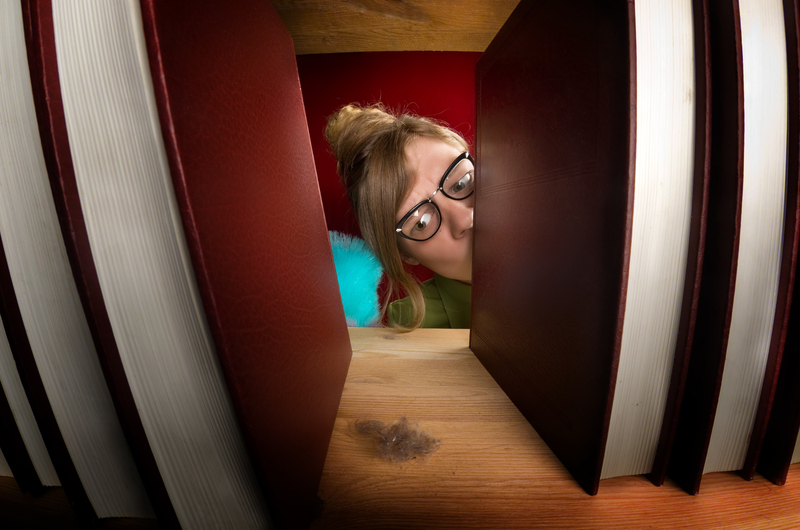Practical Solutions for Tackling Tough Burnt-on Stovetop Stains
Posted on 22/05/2025
Practical Solutions for Tackling Tough Burnt-on Stovetop Stains
Are you tired of scrubbing and scrubbing, only to discover that those stubborn, burnt-on stains just won't budge from your stovetop? If so, you're not alone. Grease splatters, food spills, and high heat can quickly leave your stovetop looking less than pristine. In this comprehensive guide, you'll learn the most effective and practical solutions for tackling even the toughest burnt-on stovetop stains, all while maintaining the look and functionality of your kitchen. Let's uncover the secrets to a sparkling stovetop!

Understanding What Causes Stubborn Stovetop Stains
Before you dive into cleaning, it's helpful to know what you're up against. Stovetop stains can be caused by several factors:
- High Heat: Cooking at high temperatures can cause spills to scorch and stick.
- Grease Buildup: Oils and fats splatter and harden, leaving sticky patches that attract more dirt.
- Sugar and Starch: These ingredients caramelize when heated, resulting in tough, burnt-on residue that's difficult to remove.
Different surfaces require specific cleaning methods, so always check your appliance's manual for manufacturer recommendations before you start battling those burnt-on stovetop stains.
Getting Started: Preparation and Safety First
Safety is paramount when tackling tough stovetop stains. Follow these steps:
- Ensure your stovetop is completely cool before cleaning.
- Unplug electric stoves or ensure gas burners are off.
- Remove grates, knobs, and burner covers for easier access.
- Gather all necessary supplies--baking soda, vinegar, dish soap, sponges, soft cloths, and non-abrasive scrapers.
- Always wear gloves to protect your hands from chemicals and hot water.
The Top Solutions for Burnt-on Stovetop Stains
1. Baking Soda and Vinegar Power
One of the most popular home remedies for tackling burnt-on stovetop stains is the combination of baking soda and vinegar. Here's how to use them:
- Sprinkle a generous amount of baking soda directly onto the burnt areas.
- Spray or pour white vinegar over the baking soda. Let the mixture sit and fizz for about 30 minutes; the chemical reaction helps break down tough grime.
- Wipe gently with a damp sponge or microfiber cloth. For stubborn stains, repeat the process.
Tip: For extra-tough spots, mix baking soda and water into a thick paste, apply, and let it sit overnight for a deeper clean.
2. Lemon Juice and Salt Scrub
When it comes to natural cleaning, lemon juice is a powerhouse thanks to its acidic properties. Mixed with salt, it provides gentle abrasion and natural degreasing action.
- Cut a lemon in half and sprinkle salt over the cut side.
- Rub the salted lemon directly onto the stained area in a circular motion. The combination helps lift and break down burnt residues.
- Let sit for 10-15 minutes, then wipe clean with a damp cloth.
This method also leaves your kitchen smelling fresh and clean!
3. Commercial Stovetop Cleaners
For extra tough burnt stains or commercial-grade cooktops, sometimes homemade methods aren't quite enough. There are a variety of store-bought stovetop cleaners designed for different types of surfaces:
- Ceramic and glass stovetop cleaners gently dissolve burnt-on spots without scratching.
- Degreasing sprays are effective on stainless steel and enamel surfaces.
- Heavy-duty cream cleaners can target the most stubborn, crusted-on stains.
Always follow manufacturer directions and do a spot test before applying to the entire surface.
4. Using a Razor Blade Scraper (for Glass and Ceramic Stovetops)
For extremely stubborn burnt-on marks on glass or ceramic surfaces, use a razor blade scraper:
- Hold the scraper at a shallow angle (about 45 degrees).
- Gently scrape away the burnt residue, taking care not to gouge or scratch the surface.
- Wipe clean with a damp cloth and polish as usual.
Note: Never use this method on gas burners or stainless steel, as it can cause scratching and damage.
5. Soaking Removable Burner Parts
Burner caps, grates, and rings are often the sites of heavy burnt-on stains. Here's a deep-clean solution:
- Remove all detachable parts and soak them in hot, soapy water for at least 30 minutes.
- Use a soft-bristled brush or non-abrasive scrubber to remove loosened residue.
- For extra-tough stains, create a paste of baking soda and water, apply to stains, and scrub gently.
- Rinse thoroughly and allow to dry completely before reassembling.
6. Hydrogen Peroxide and Baking Soda Paste
For truly impossible burnt-on marks, try a hydrogen peroxide and baking soda paste:
- Mix baking soda and a small amount of hydrogen peroxide to form a paste.
- Spread onto the stain and let it sit for 20-30 minutes (or longer for severe cases).
- Scrub gently and wipe clean.
How to Clean Different Types of Stovetops
The best solutions for burnt-on stovetop stains may vary depending on your stovetop material. Here's what you need to know for each type:
Glass and Ceramic Cooktops
- Always use non-abrasive pads; steel wool will scratch and dull the finish.
- Baking soda, vinegar, and dedicated cream cleaners are the best choices.
- Consider a specialized scraper for burnt-on bits, but use carefully to avoid chipping.
Stainless Steel Stovetops
- Clean with soft sponges or microfiber cloths to prevent scratching.
- Avoid chlorine-based cleaners, which can cause discoloration.
- Finish by buffing with a few drops of olive oil for a streak-free shine.
Gas Burner Stovetops
- Remove and soak burner components before scrubbing.
- For the stovetop surface, use degreasing cleaners and gentle scrubbing tools.
- Ensure all components are completely dry before reattaching and relighting burners.
Pro Tips to Prevent Burnt-on Stove Stains
While knowing how to tackle stubborn stovetop stains is essential, prevention is even better. Save yourself time and effort with these maintenance strategies:
- Wipe spills immediately with a damp cloth--fresh stains are much easier to remove.
- Use pot lids to catch splatters and choose proper pan sizes to prevent overflow.
- After each use, quickly spray and wipe the surface with a solution of equal parts vinegar and water.
- Regularly clean burner grates and drip pans by soaking and scrubbing to avoid buildup.
- Schedule deep cleaning once a month to keep your stovetop gleaming.
Common Mistakes to Avoid
Not all cleaning methods are created equal. Avoid these pitfalls when addressing tough burnt stains on stovetops:
- Using highly abrasive scouring pads or steel wool, which can scratch and permanently damage your stovetop.
- Applying harsh chemicals indiscriminately--some may corrode certain surfaces or ruin finishes.
- Scrubbing with excessive force, which can loosen hardware or break fragile components.
- Neglecting regular cleaning, which leads to hard-to-remove, caked-on buildup.
FAQs: Tackling Burnt-on Stovetop Stains
- How do I remove black burn marks from a glass stovetop?
Use a paste of baking soda and water, let it sit for 30 minutes, then gently scrape with a glass-safe razor blade. - Can I use bleach on my stovetop?
Avoid bleach, as it can discolor and weaken surfaces, especially stainless steel or ceramic. - What's the best way to clean electric stove coils?
Unplug the coils, wipe with a damp cloth, and use a mild cleanser for stubborn spots. Never submerge in water. - How often should I deep clean my stovetop?
For best results, perform a deep clean once a month or more frequently if you cook daily and experience frequent spills.

Conclusion: Enjoy a Spotless, Burn-Free Stovetop
Conquering tough burnt-on stovetop stains doesn't have to be a battle. By using these practical solutions, you can restore the shine and functionality of your cooktop without harsh chemicals or endless scrubbing. Whether you prefer natural cleaning methods, commercial products, or a combination of both, maintaining a clean stove is within reach.
Stay proactive, clean spills immediately, and treat your kitchen appliances with care. With these tough burnt-on stovetop stain solutions, you'll keep your kitchen looking immaculate and ready for your next culinary adventure.



